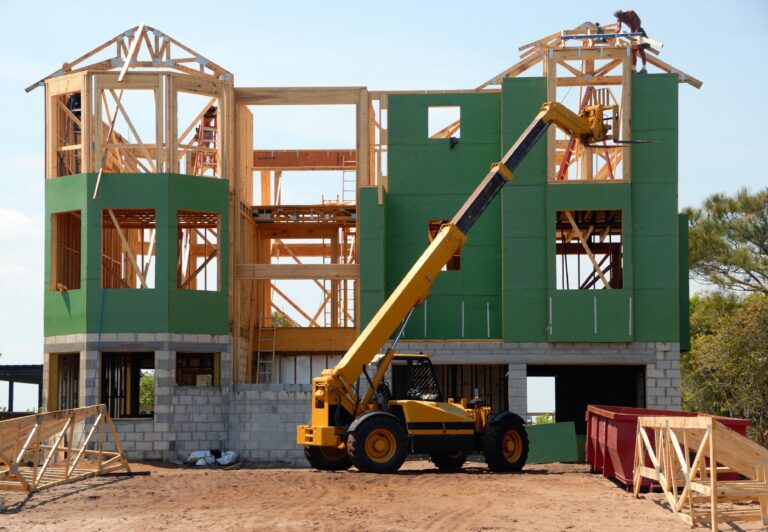Why Fertilization Matters
Fertilizing your sod turf is more than just a chore – it’s a crucial step towards maintaining a verdant and healthy lawn. Understanding the dos and don’ts of sod turf fertilization is essential for nurturing a vibrant landscape.
9 Dos and Don’ts for Easy Sod Turf Fertilization
The Basics of Sod Turf Fertilization
What is Sod Turf?
Sod turf, often referred to as “sod,” consists of grass and the immediate soil beneath it, held together in a single piece. It’s a popular choice for creating an instant lawn.
Why Fertilize Sod?
Fertilization provides essential nutrients that are vital for the growth and health of your sod. These nutrients help your lawn flourish, ensuring it remains lush and resilient.
Choosing the Right Fertilizer
Understanding N-P-K Ratios
N-P-K ratios on fertilizer labels represent the percentages of essential nutrients: nitrogen (N), phosphorus (P), and potassium (K). Understanding these ratios is key to selecting the right fertilizer for your sod.
Organic vs. Synthetic Fertilizers
Explore the differences between organic and synthetic fertilizers, considering their benefits and drawbacks.
Dos of Sod Turf Fertilization
Proper Timing
Timing is everything when it comes to fertilizing your sod. Discover the ideal moments to apply fertilizer for optimal results.
Soil Testing
Before you fertilize, it’s important to know your soil’s nutrient levels. Learn why soil testing is crucial and how to interpret the results.
Even Application
Achieving an even distribution of fertilizer is essential for uniform growth. Find out how to apply fertilizer evenly across your lawn.
Watering After Application
Discover the importance of watering your lawn after fertilization and the role it plays in nutrient absorption.
Follow Recommended Rates
Fertilizer labels provide recommended application rates. Learn why it’s essential to adhere to these guidelines.
Don’ts of Sod Turf Fertilization
Over-Fertilization
Excessive fertilization can harm your sod. Understand the signs of over-fertilization and how to avoid it.
Under-Fertilization
Neglecting to provide adequate nutrients can lead to weak and unhealthy turf. Learn how to prevent under-fertilization.
Fertilizing During Stressful Conditions
Timing your fertilizer application poorly, such as during extreme weather, can harm your lawn. Discover the conditions to avoid.
Neglecting Environmental Considerations
Consider the environment when fertilizing your sod. Explore eco-friendly practices and reduce the risk of chemical runoff.
This is just the beginning of our journey into the world of sod turf fertilization. In the following sections, we’ll delve deeper into specific aspects, techniques, and tips to help you maintain a beautiful and thriving lawn.
Managing Nutrient Deficiencies
Identifying Deficiencies
Recognizing nutrient deficiencies in your sod turf is crucial for addressing them effectively. Learn how to spot common signs and symptoms.
Corrective Measures
Once you’ve identified a deficiency, it’s important to know how to rectify the situation. Discover the appropriate actions to take based on specific nutrient deficiencies.
Sod Turf Fertilization Techniques
Broadcast Spreading
Broadcast spreading is a popular method for applying fertilizer to a large lawn area. Explore the steps and best practices for this technique.
Liquid Fertilization
Liquid fertilizers offer certain advantages. Find out how to properly use liquid fertilizers on your sod turf.
Slow-Release Granules
Slow-release granular fertilizers provide long-lasting nourishment to your lawn. Understand how they work and when to use them.
Organic Alternatives
Compost and Mulch
Organic alternatives can be environmentally friendly and effective. Learn how to utilize compost and mulch for sod turf fertilization.
Fish Emulsion
Fish emulsion is a natural fertilizer option. Discover how to use it and the benefits it brings to your lawn.
Seaweed Extract
Seaweed extract is a valuable organic fertilizer. Find out why it’s gaining popularity and how to apply it to your sod.
Long-Term Lawn Health
Aeration and Dethatching
Maintaining aeration and managing thatch buildup is essential for long-term lawn health. Explore the importance of these practices.
Seasonal Considerations
Different seasons require different approaches to fertilization. Learn how to adapt your strategy throughout the year.
Regular Maintenance
Consistent upkeep is the key to a consistently lush lawn. Discover the routine maintenance tasks that support sod turf health.
Troubleshooting Common Issues
Lawn Burn
Lawn burn can occur due to fertilizer application mistakes. Understand the causes and how to prevent it.
Weeds and Unwanted Growth
Unwanted growth can undermine your sod’s health. Learn how to address common weed and unwanted grass issues.
Insect Pests
Insects can wreak havoc on your lawn. Explore methods to identify and combat common lawn pests.
Environmental Impact
Eco-Friendly Practices
Discover eco-friendly practices that reduce the environmental impact of sod turf fertilization.
Reducing Chemical Runoff
Preventing chemical runoff is essential for protecting waterways. Learn how to minimize this environmental concern.
Dos and Don’ts Summary
Sod turf fertilization requires careful consideration and proper techniques to maintain a healthy and thriving lawn. This comprehensive guide covers essential do’s and don’ts of fertilization, ensuring you achieve the best results.
Do’s of Sod Turf Fertilization:
- Proper Timing: Understand the ideal timing for fertilization to maximize its effectiveness.
- Soil Testing: Conduct soil testing to determine nutrient levels and interpret results accurately.
- Even Application: Ensure uniform distribution of fertilizer for consistent growth.
- Watering After Application: Recognize the importance of watering after fertilization for nutrient absorption.
- Follow Recommended Rates: Adhere to recommended application rates provided on fertilizer labels.
Don’ts of Sod Turf Fertilization:
- Over-Fertilization: Avoid excessive fertilization, which can harm your sod.
- Under-Fertilization: Prevent weak and unhealthy turf by providing adequate nutrients.
- Fertilizing During Stressful Conditions: Refrain from fertilizing during extreme weather or unfavorable conditions.
- Neglecting Environmental Considerations: Consider eco-friendly practices to reduce chemical runoff and protect the environment.
The guide also delves deeper into managing nutrient deficiencies, sod turf fertilization techniques (including broadcast spreading, liquid fertilization, slow-release granules, and organic alternatives like compost and fish emulsion), and long-term lawn health through aeration, seasonal considerations, and regular maintenance. Troubleshooting common issues such as lawn burn, weeds, unwanted growth, and insect pests is addressed, along with eco-friendly practices and reducing chemical runoff for a sustainable approach to sod turf fertilization.
Conclusion
In your quest for a stunning lawn, mastering the dos and don’ts of sod turf fertilization is paramount. By following best practices, selecting the right fertilizer, and considering environmental impacts, you can achieve a vibrant and resilient turf that enhances your outdoor space. Remember that proper care and maintenance, including soil testing and nutrient management, are vital for long-term success.
So, go ahead and apply these insights to your lawn care routine, and watch your sod thrive, becoming the envy of your neighborhood.






